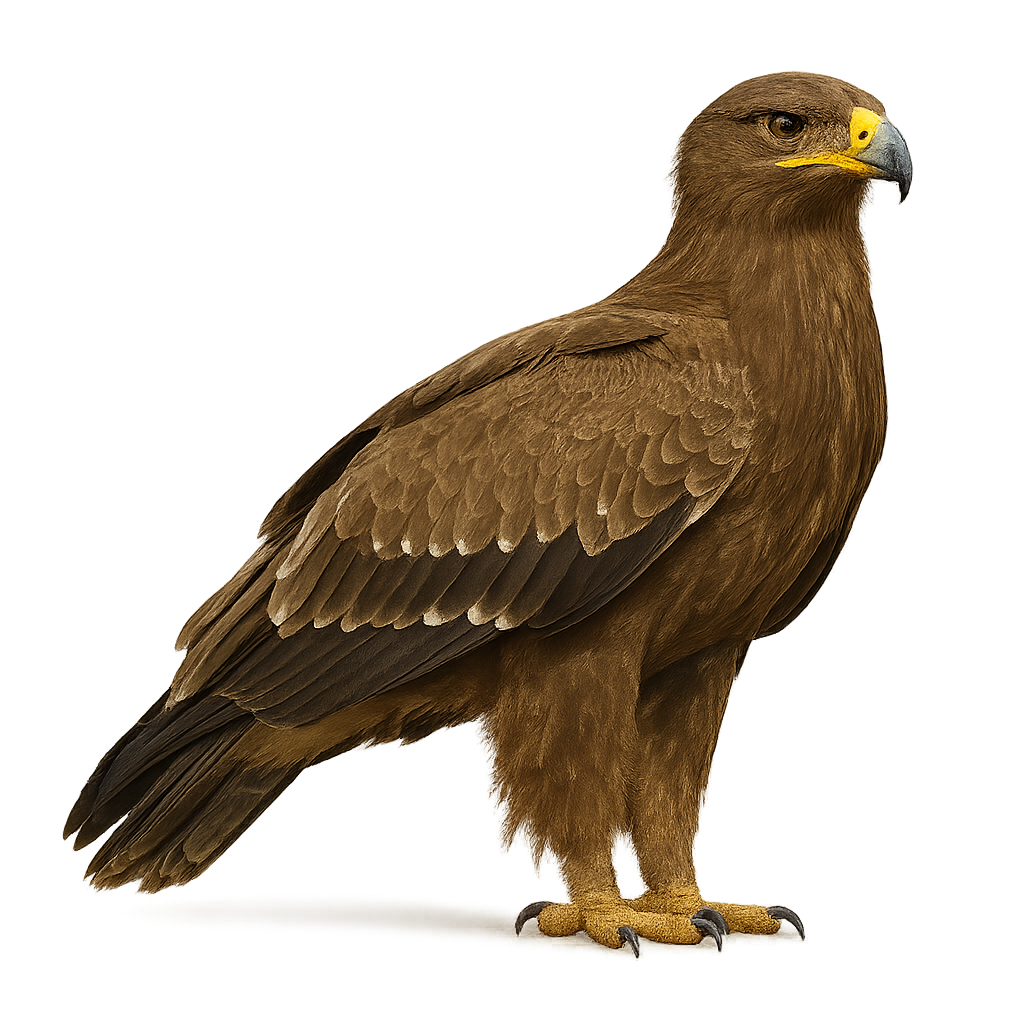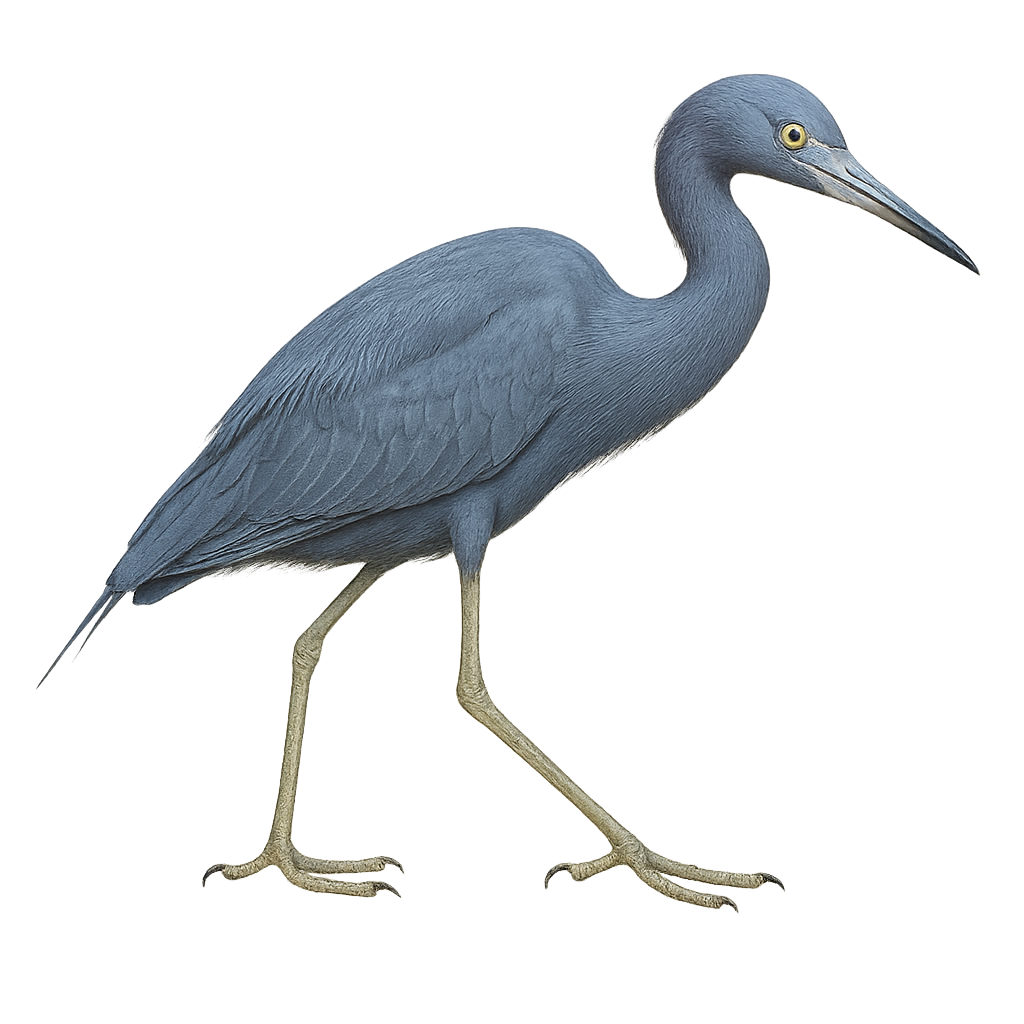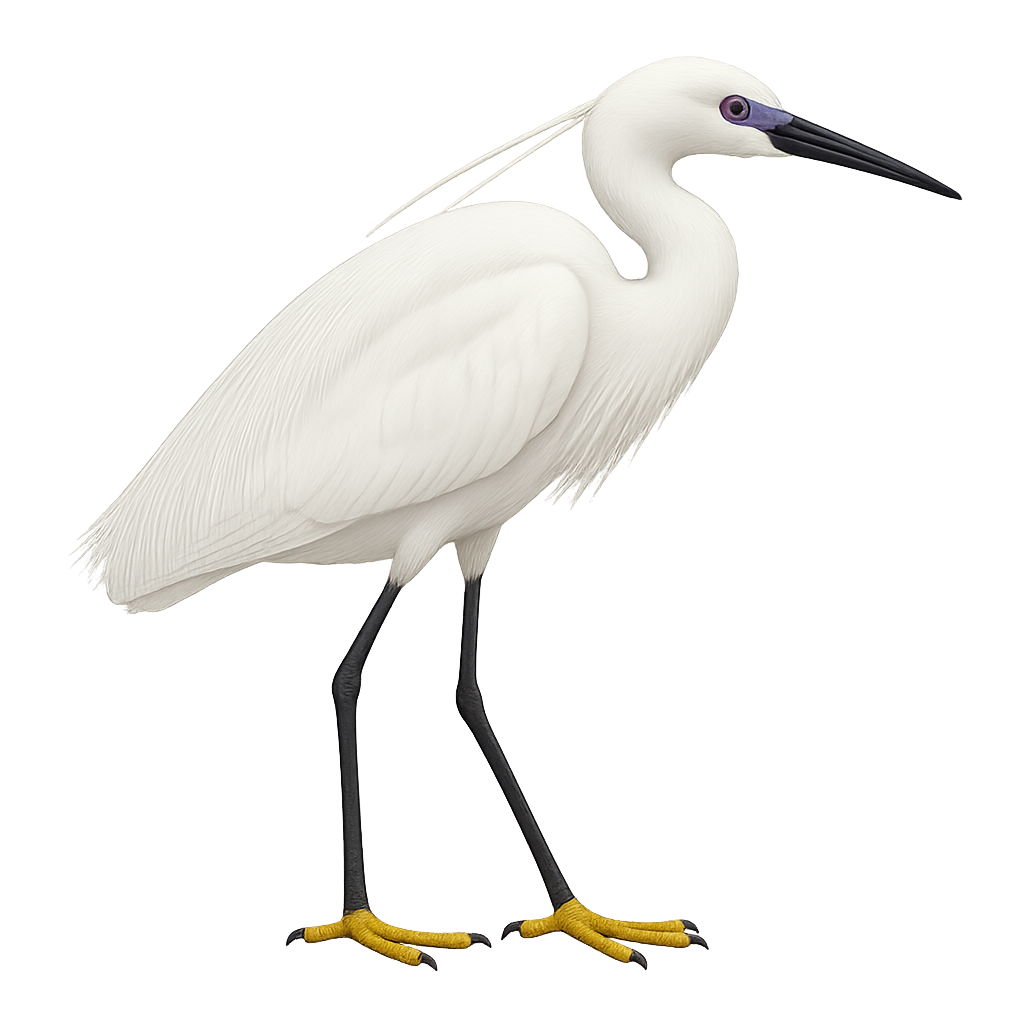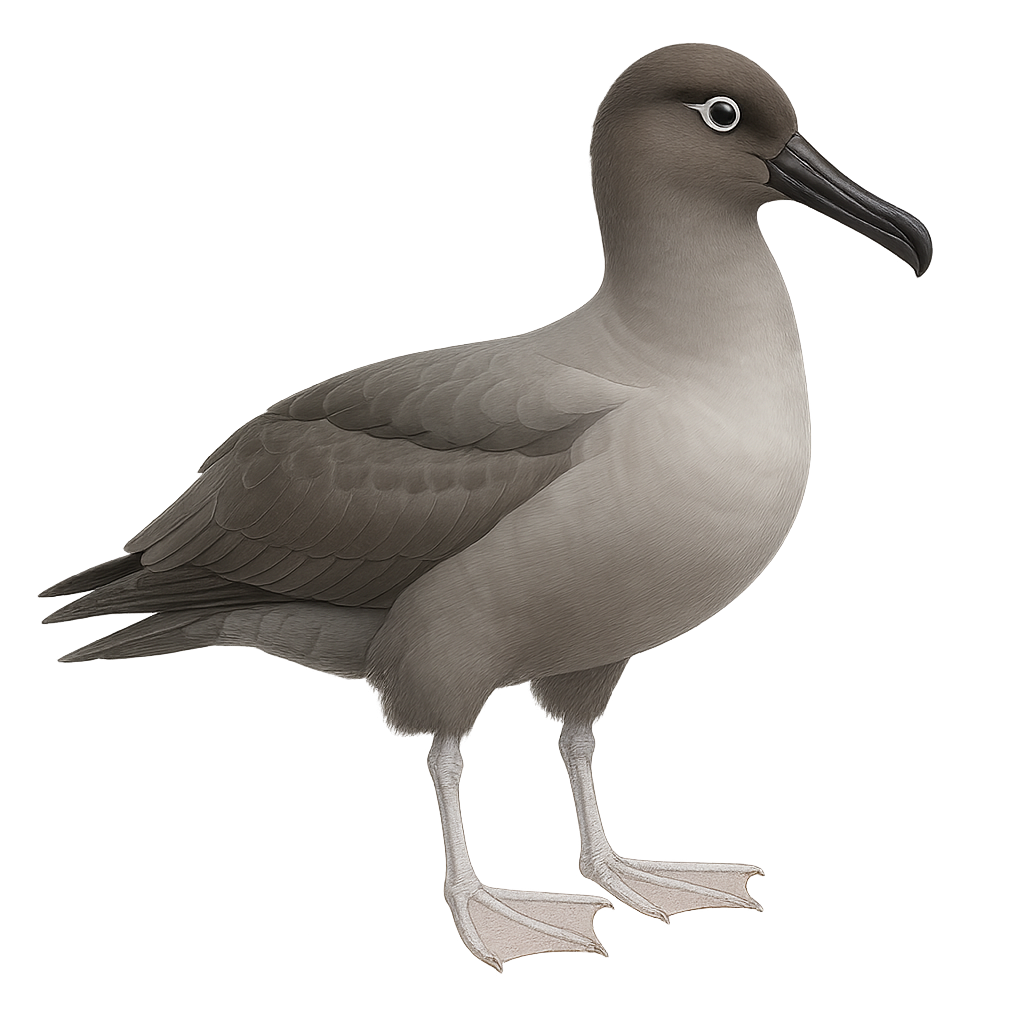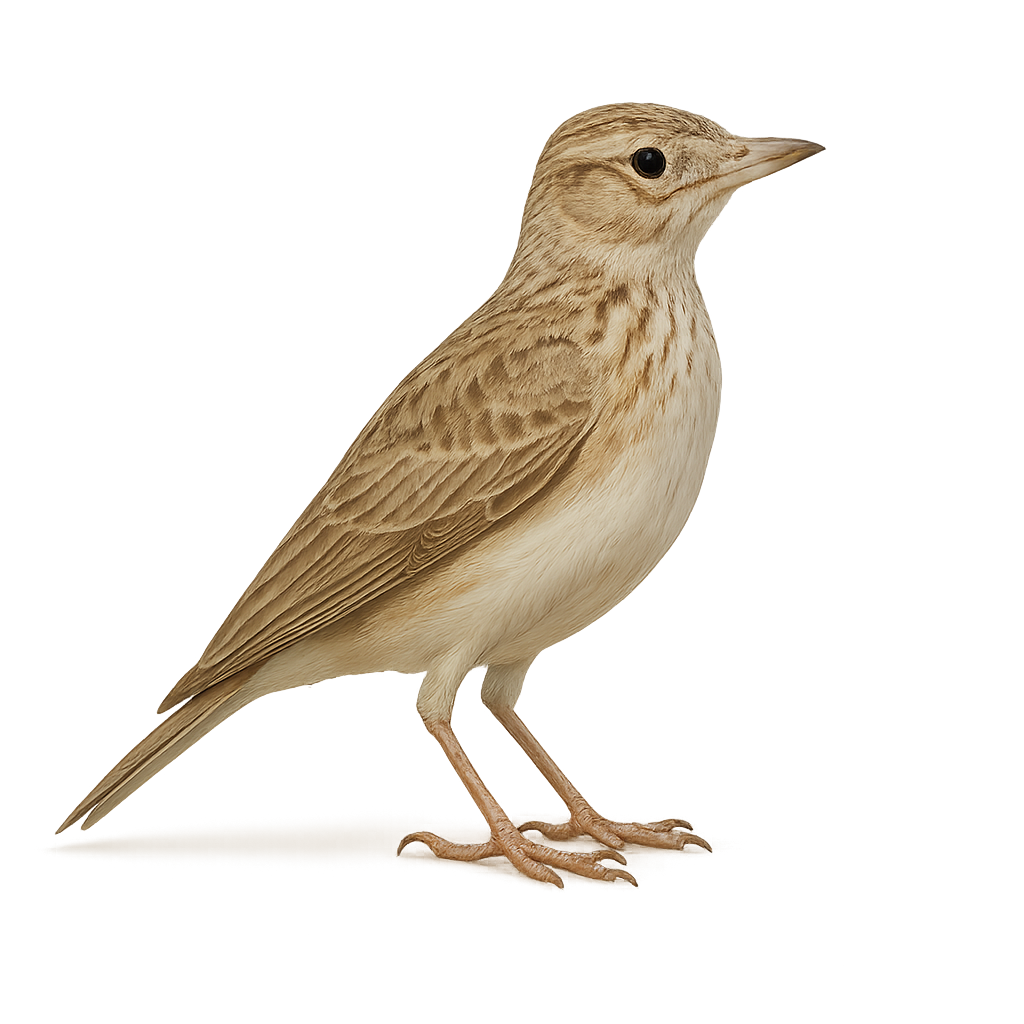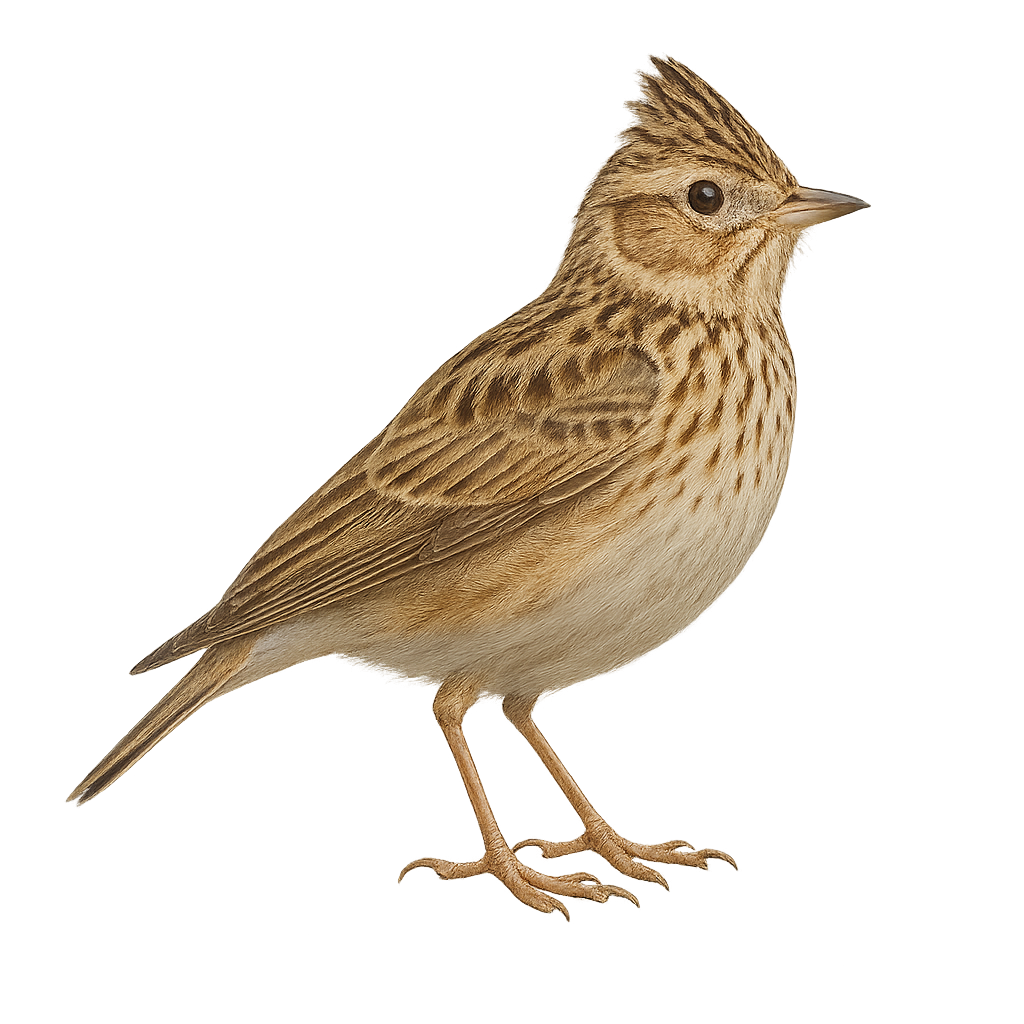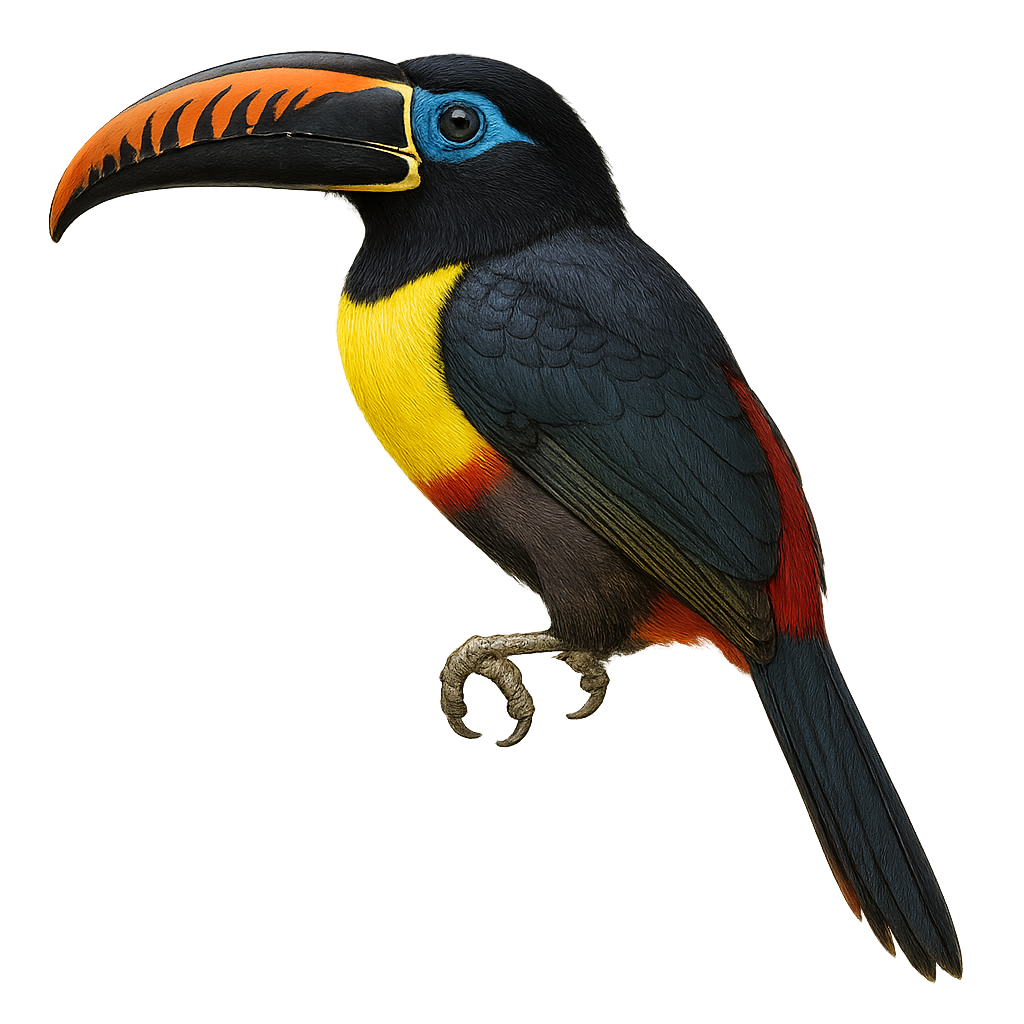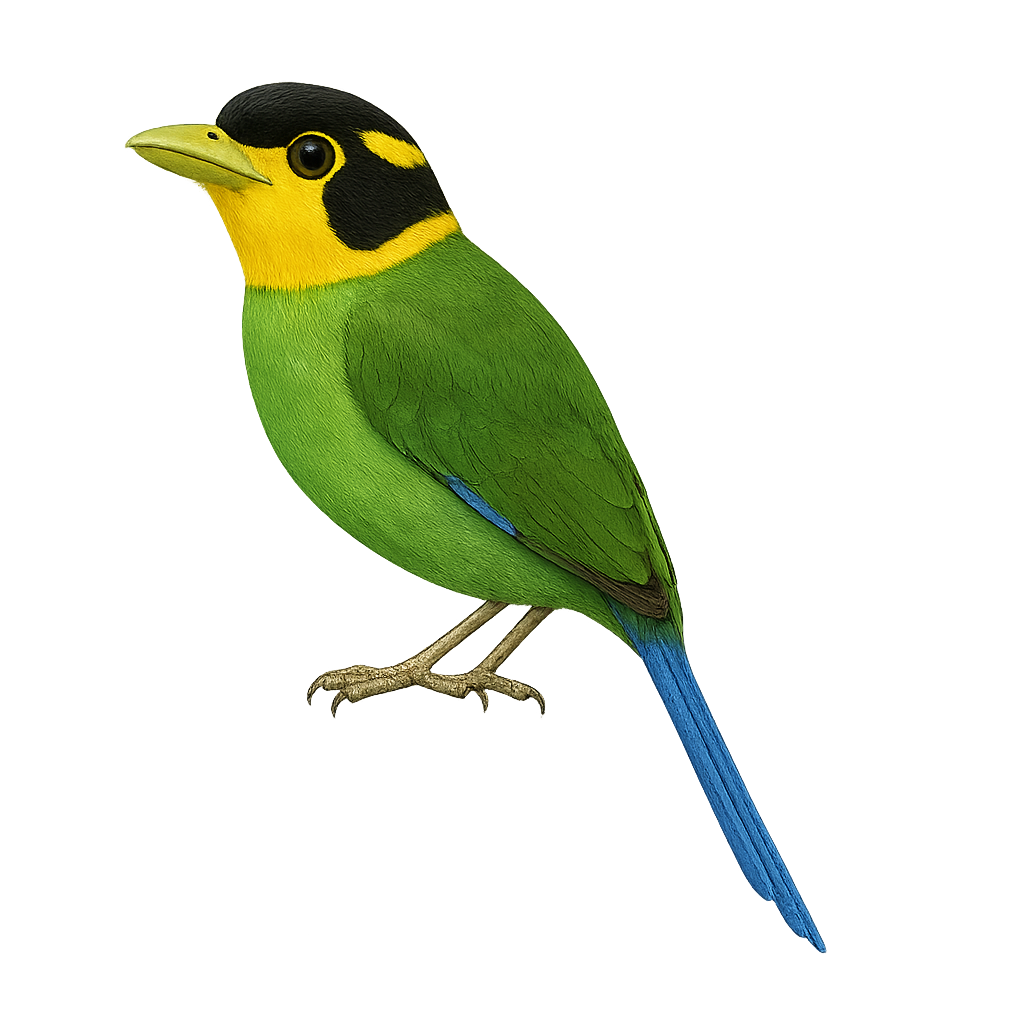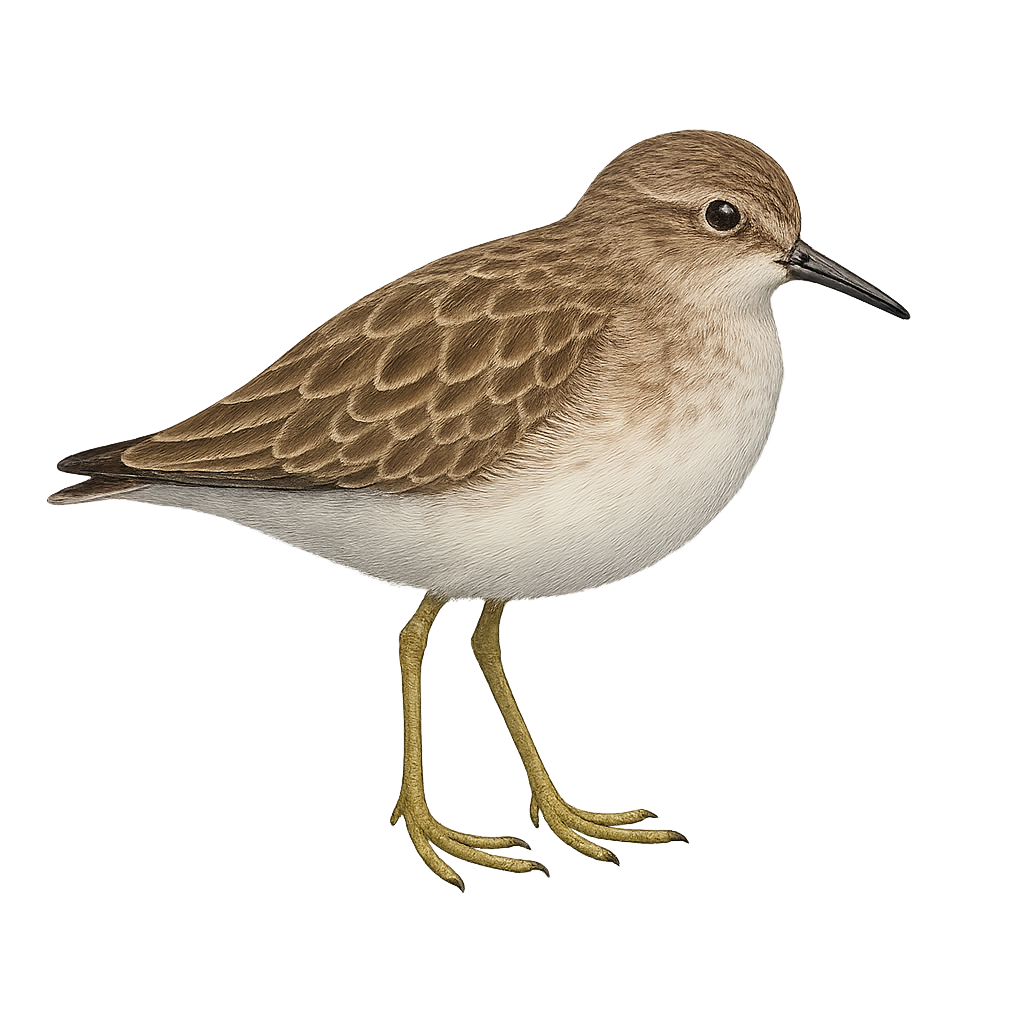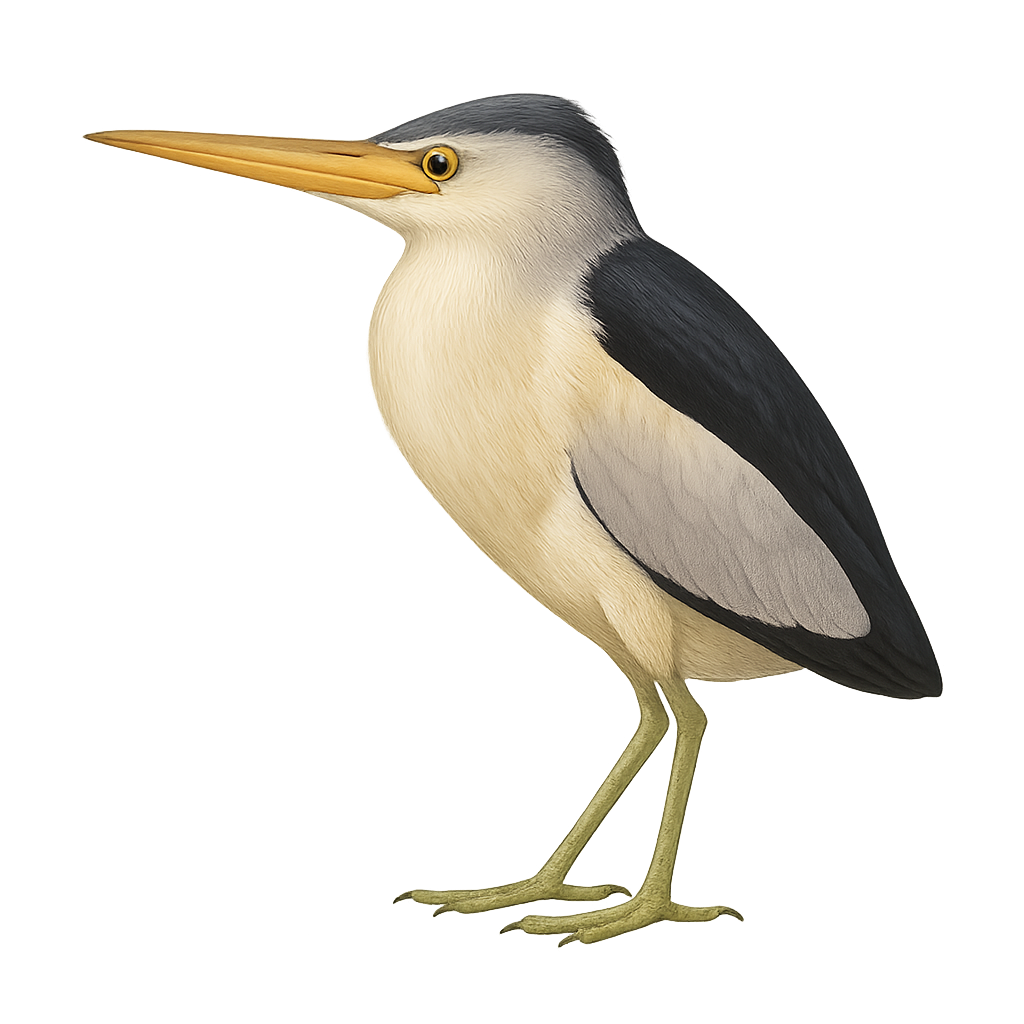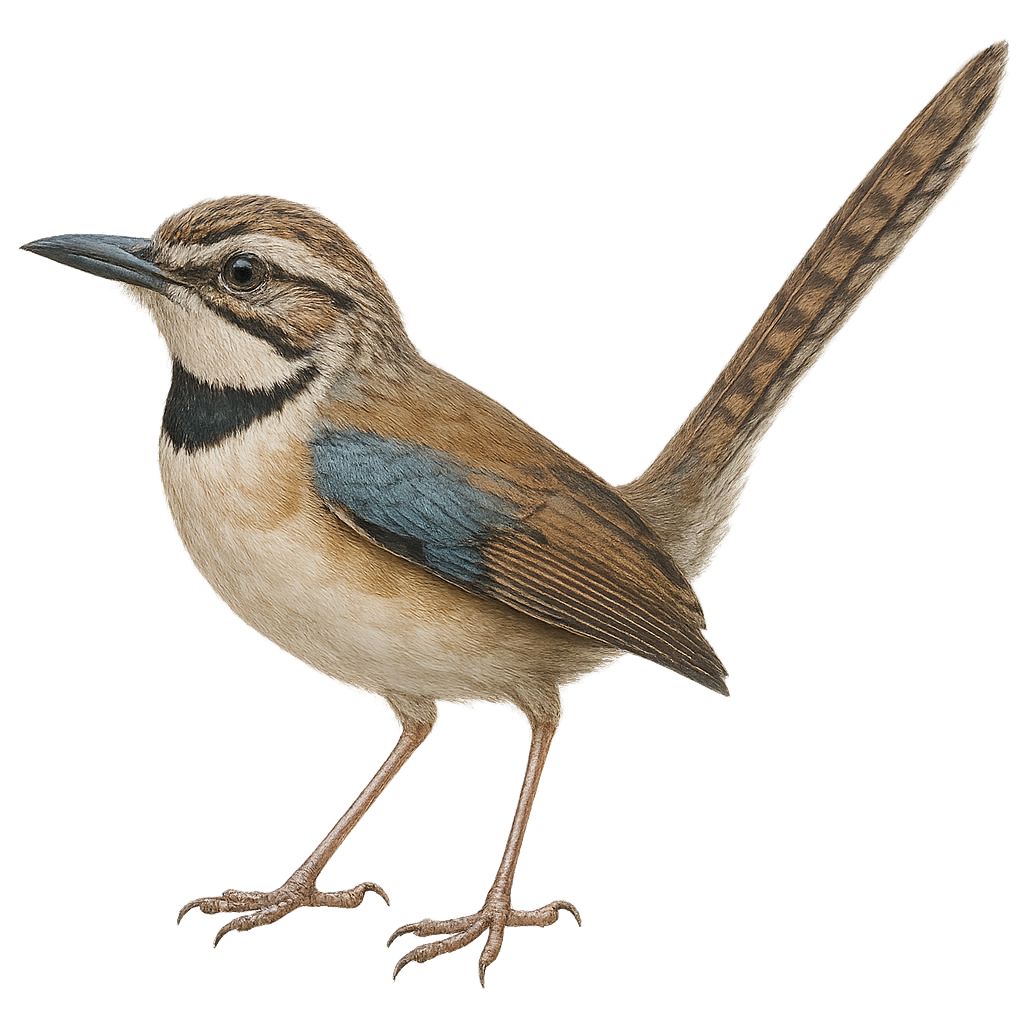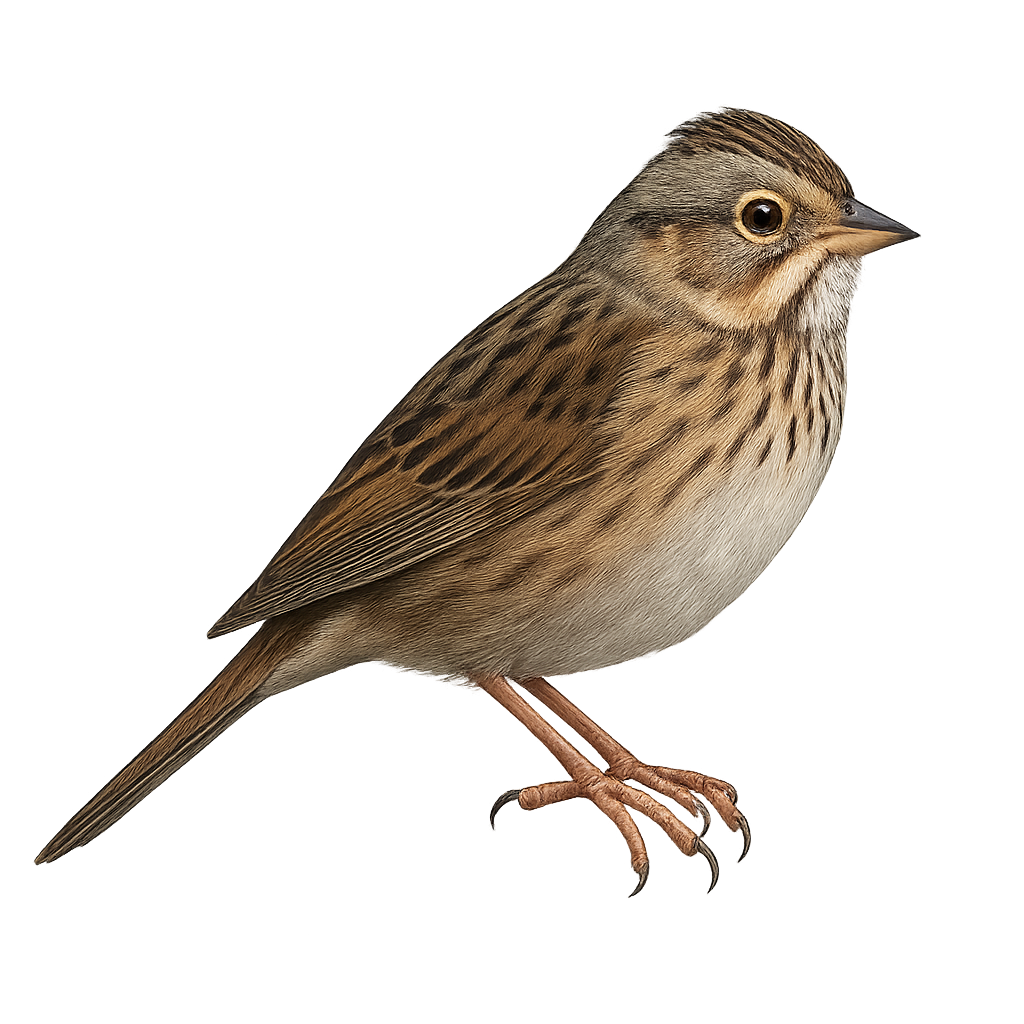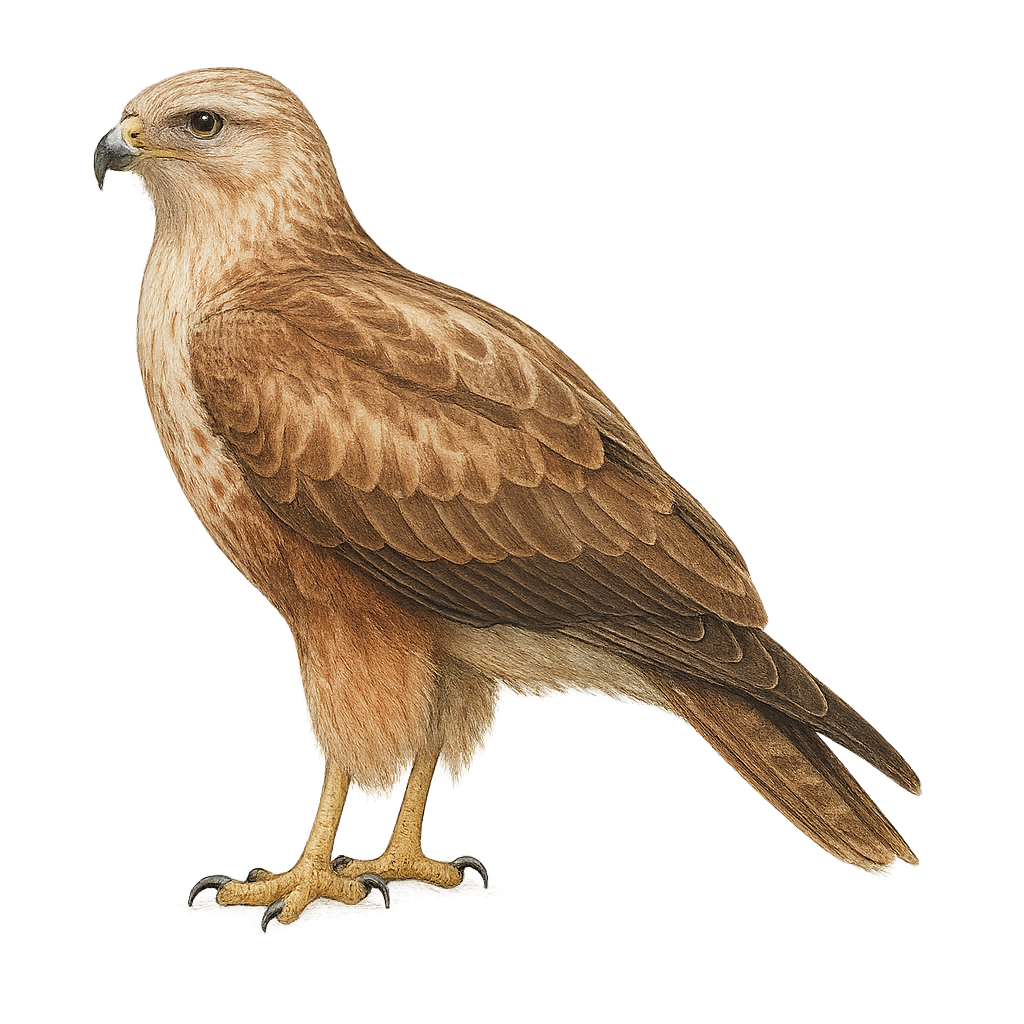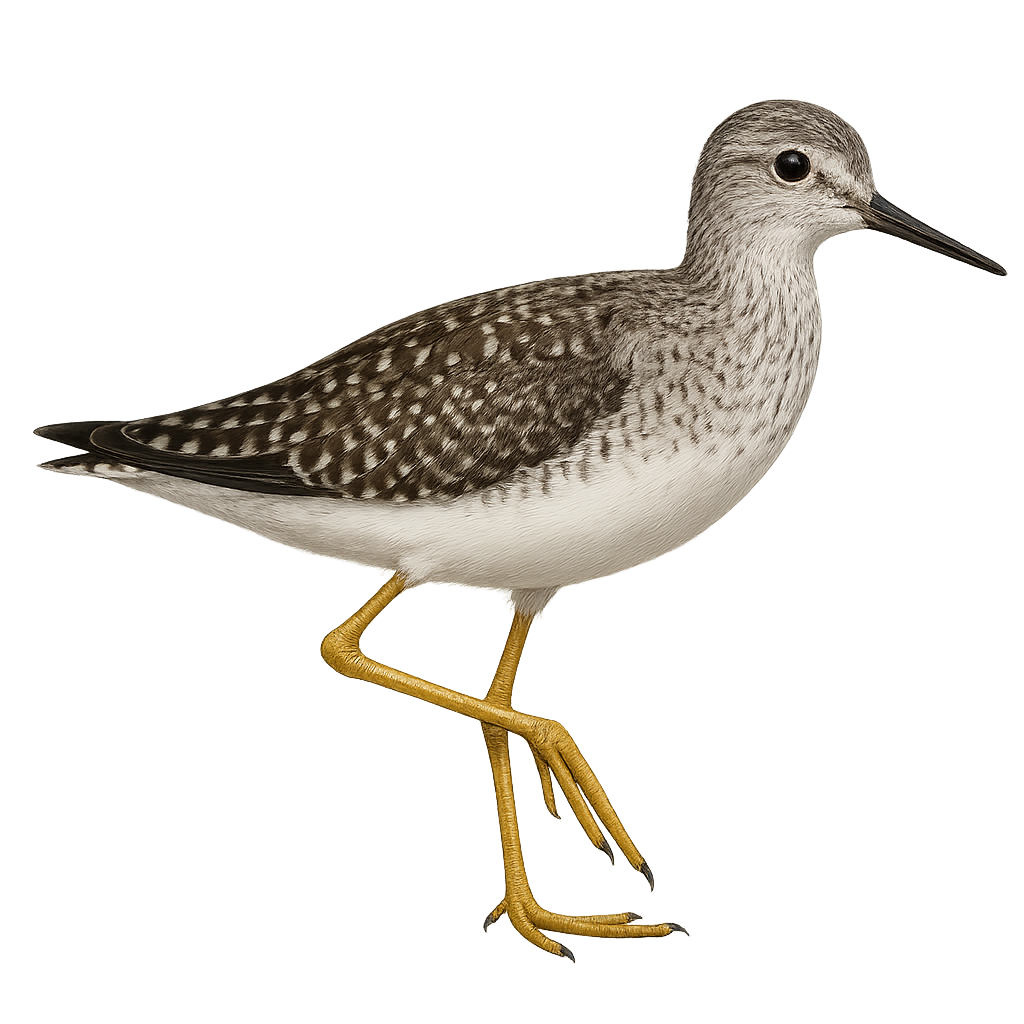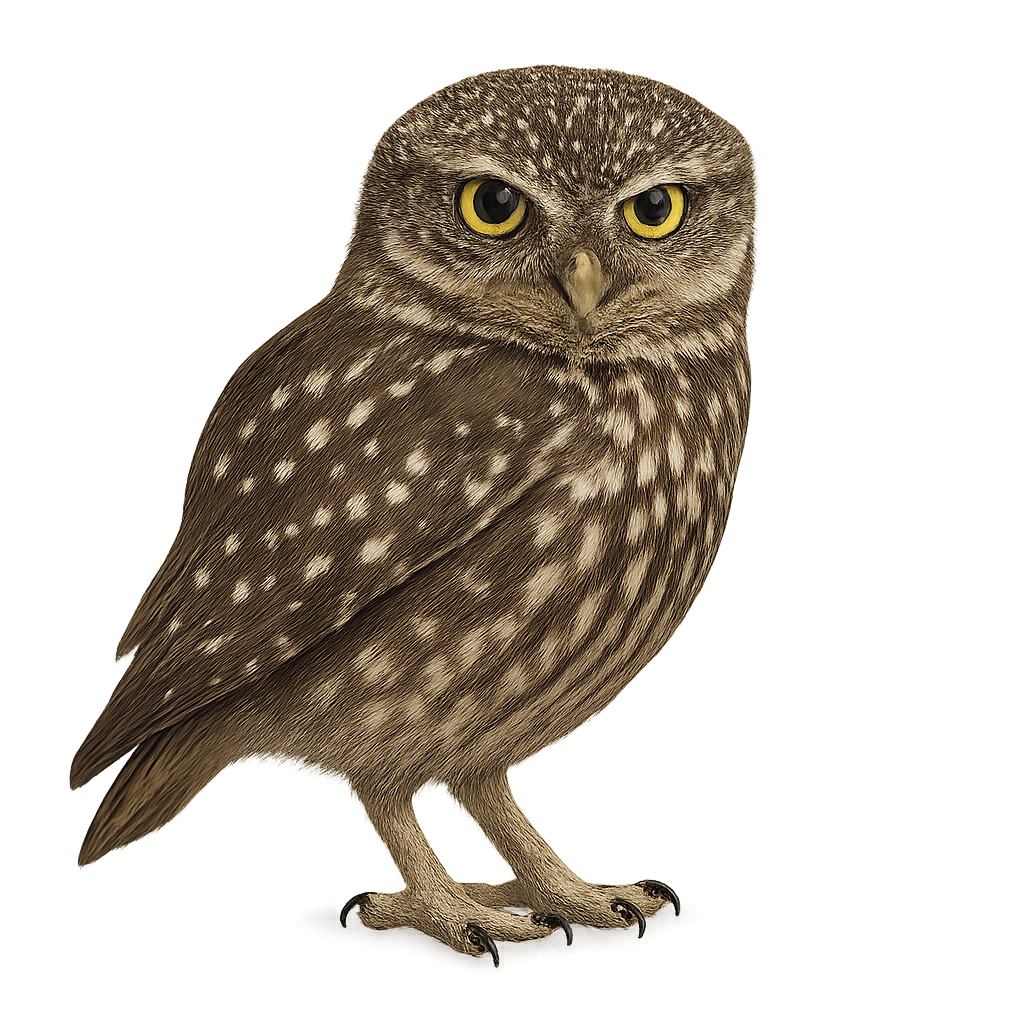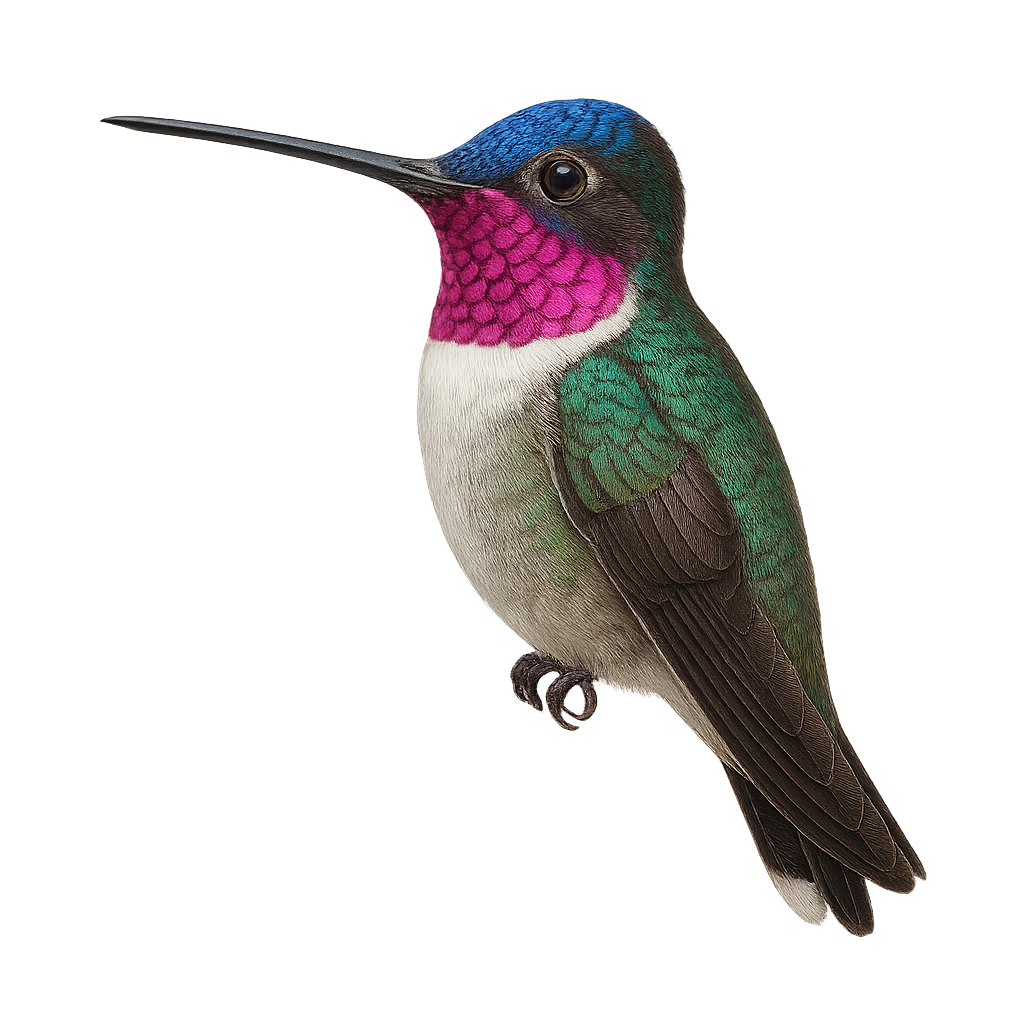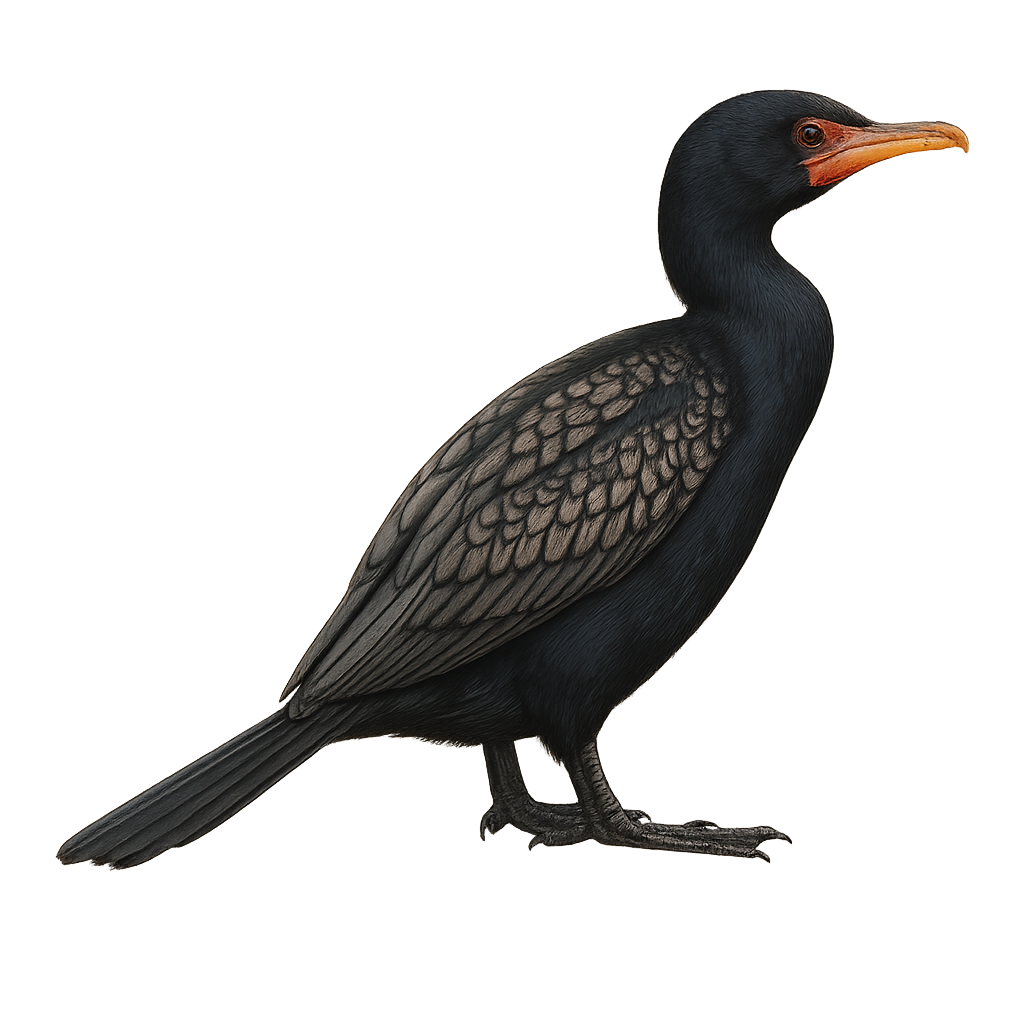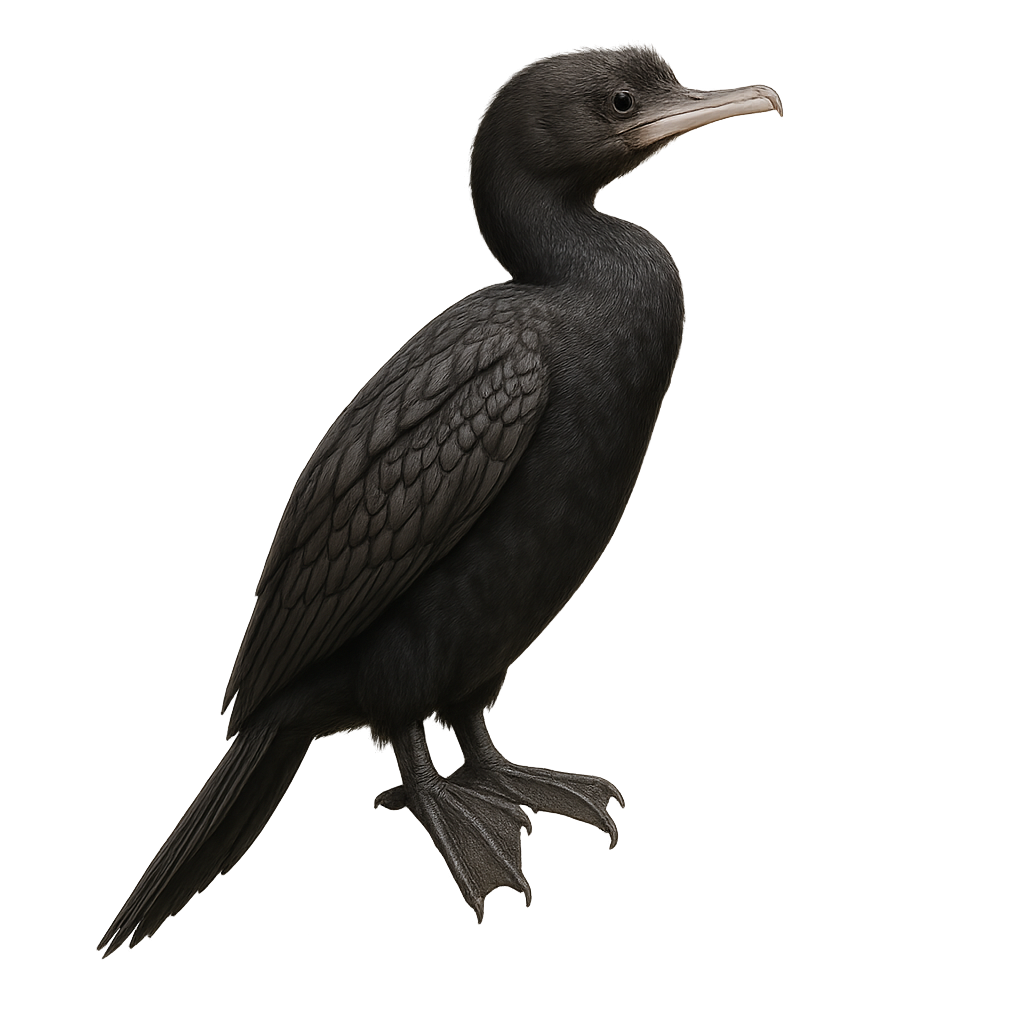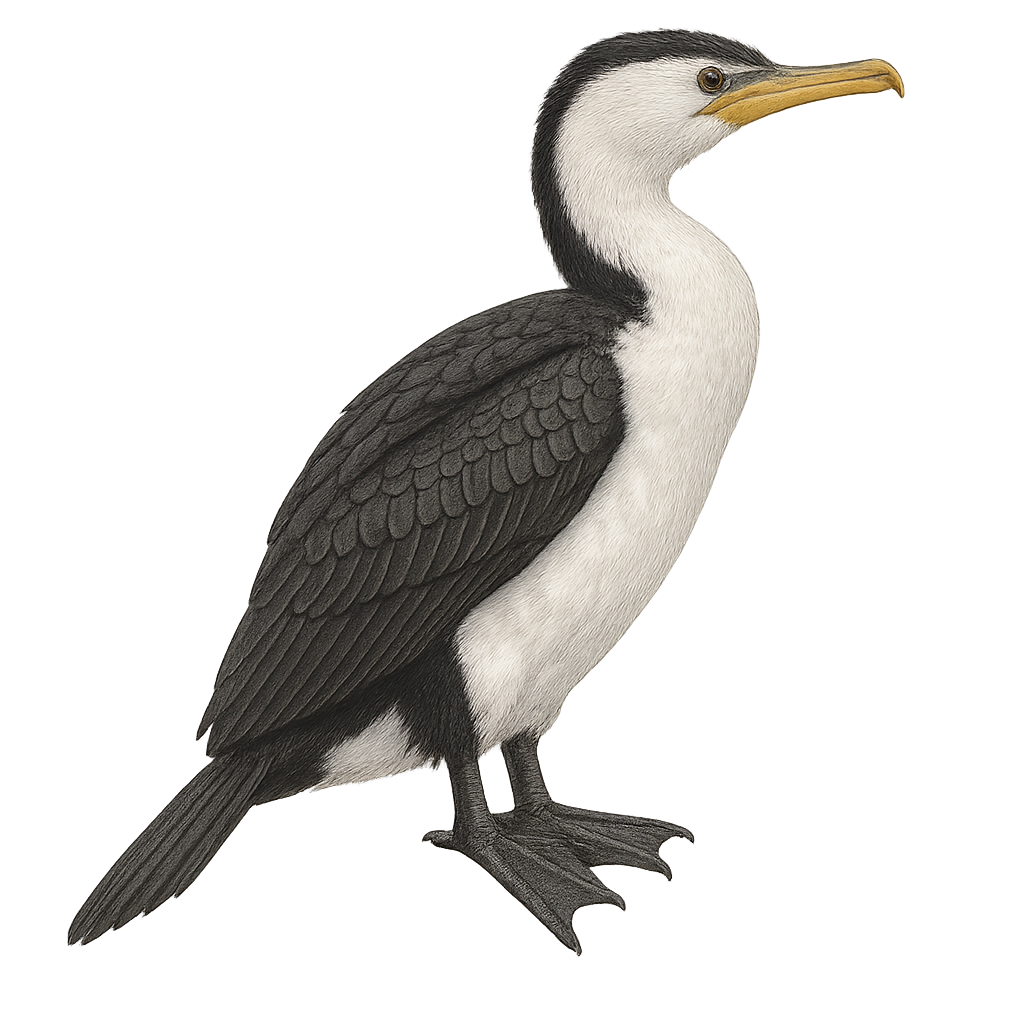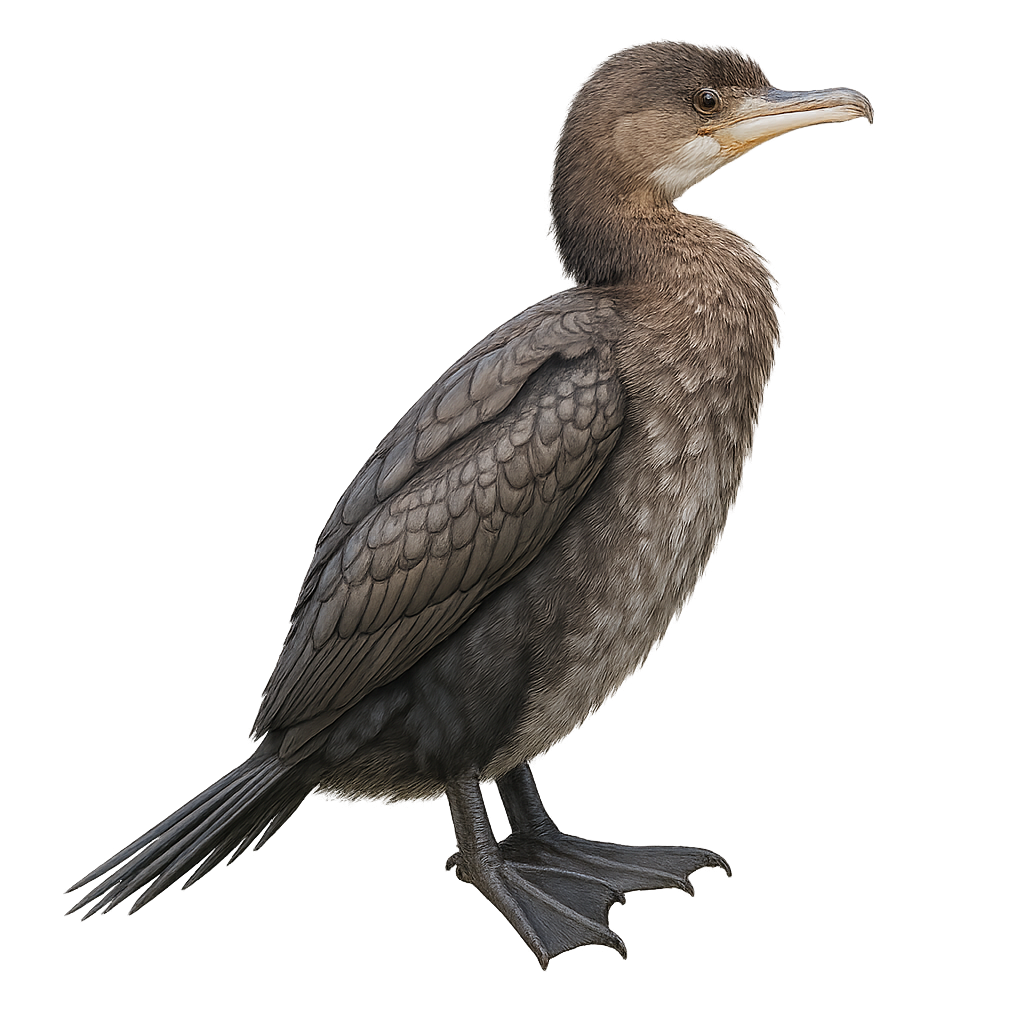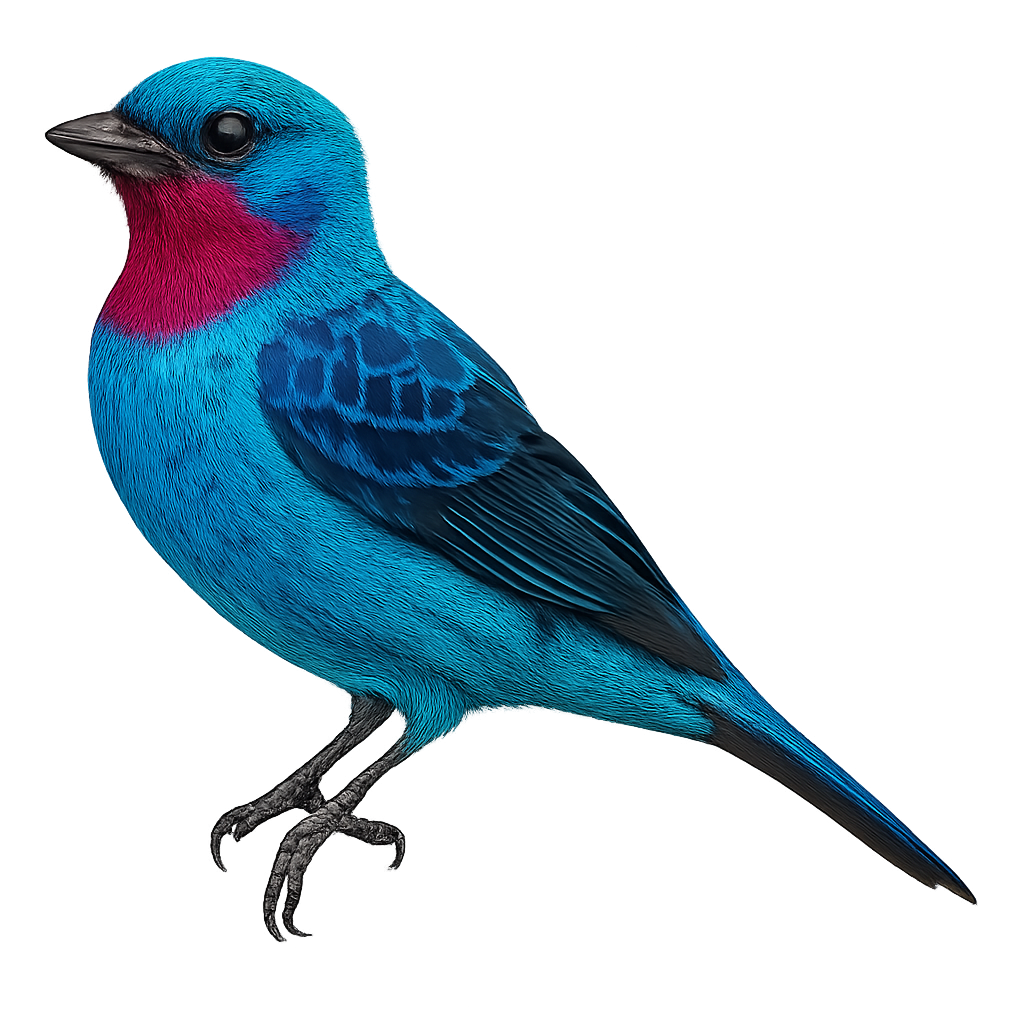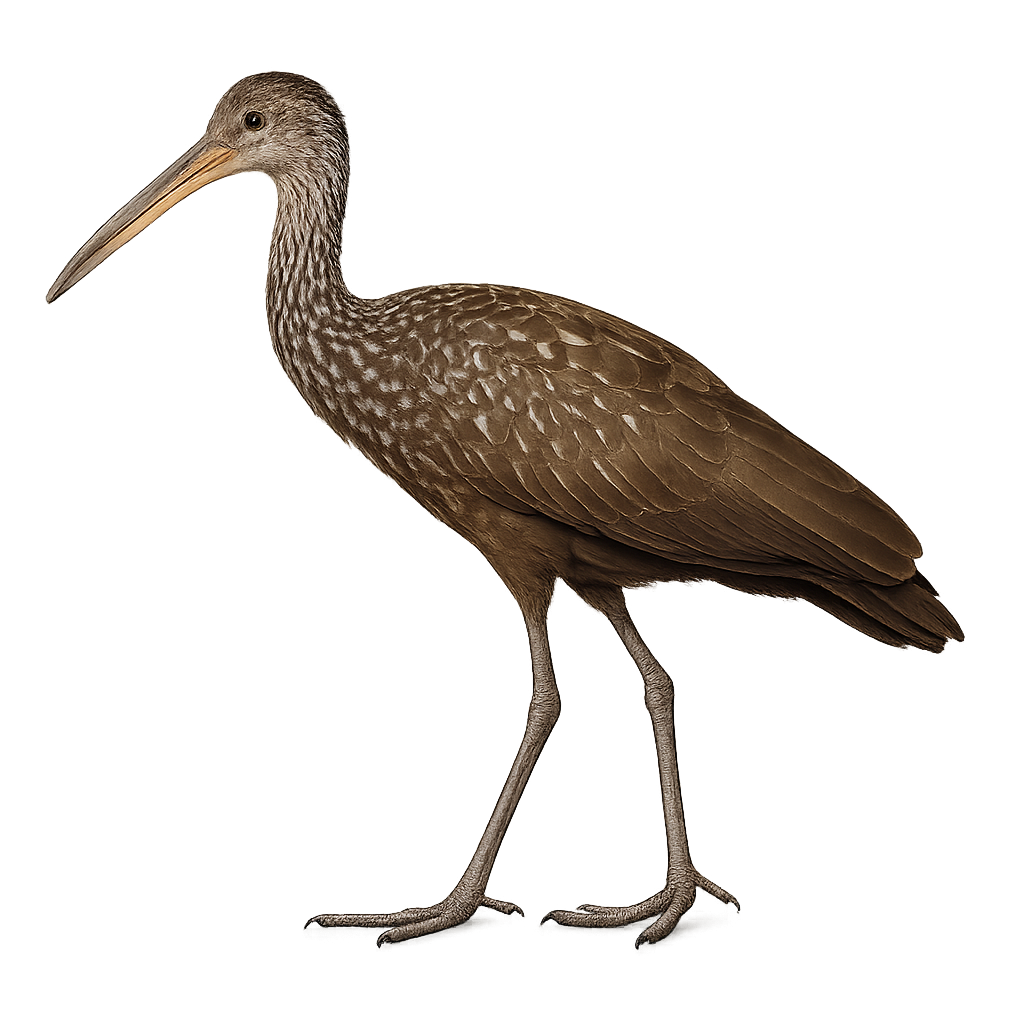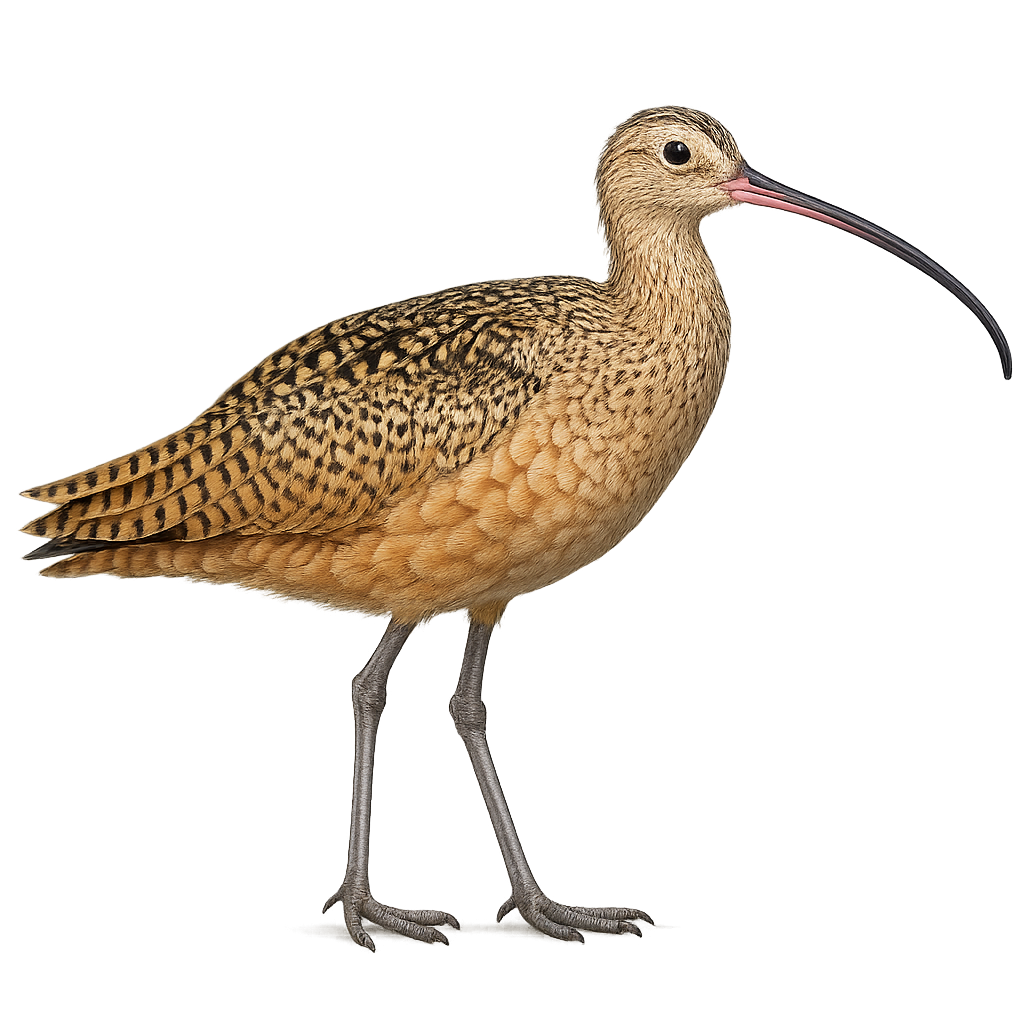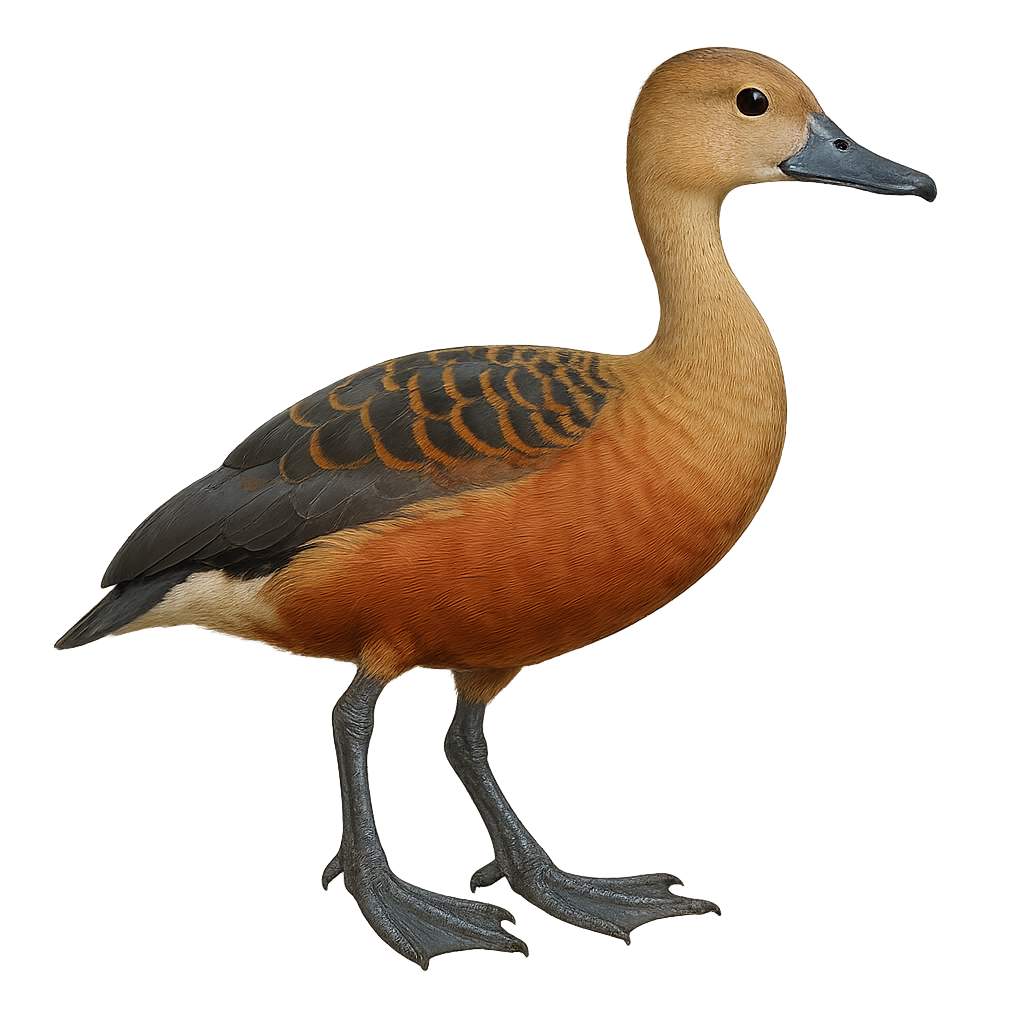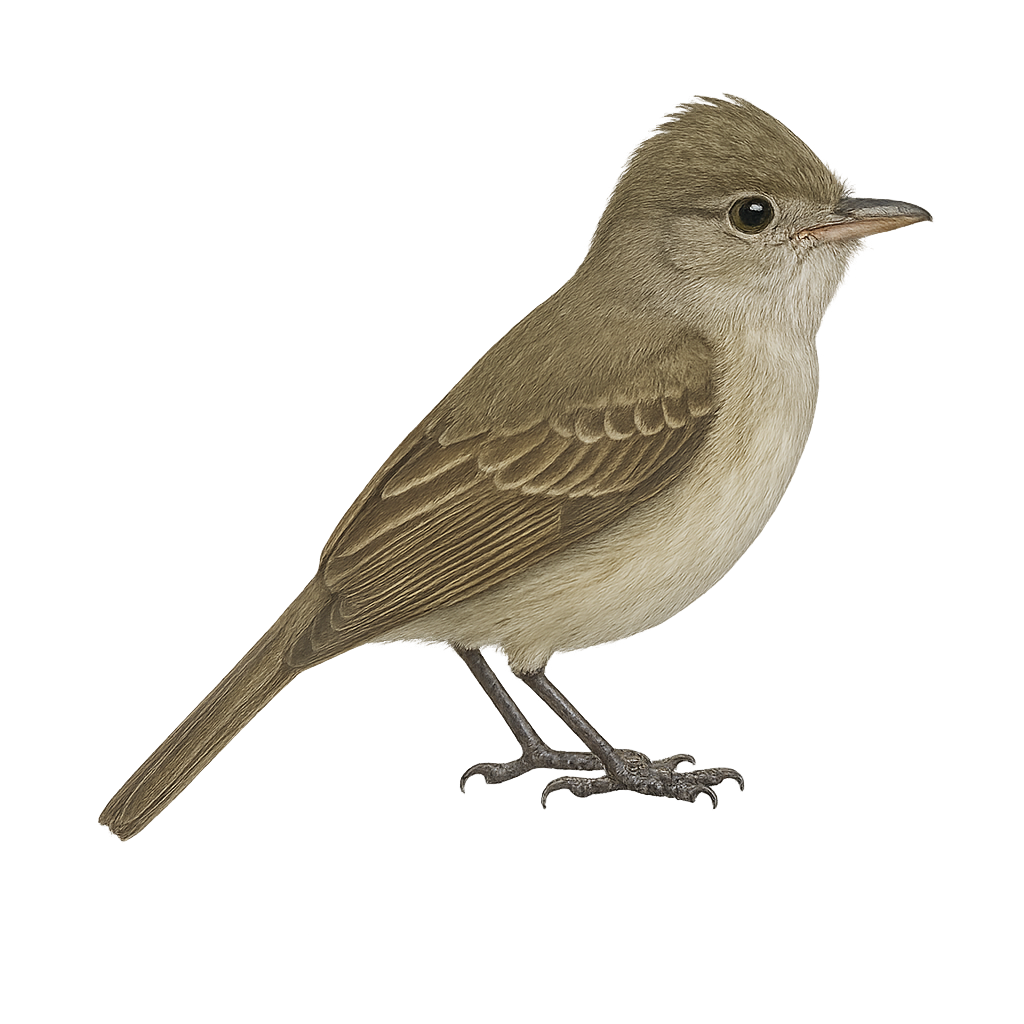The lesser spotted eagle is a medium-sized eagle, 62–68 cm long with a 145–165 cm wingspan, pale brown head and wing coverts contrasting with darker plumage, and usually a white 'V' on the rump. It inhabits open or lightly wooded country, feeding mainly on small mammals, birds and reptiles. During breeding, males perform undulating display flights and vocalize to attract females and defend territories.
The Little Blue Heron, Egretta caerulea, is an elegant and graceful bird, easily recognizable by its slate-blue plumage in adults and white in juveniles. It measures about 60 cm in length with a wingspan of 100 cm. Its long, slender bill is perfect for catching aquatic prey. It primarily inhabits wetlands, marshes, and mangroves, feeding on fish, amphibians, and insects. Its flight is slow and deliberate, with steady wing beats. The Little Blue Heron is often solitary but may gather in small colonies during the breeding season. It is widely distributed in the southern United States, Central America, and northern South America.
The Little Egret is an elegant bird, easily recognized by its pure white plumage and long black legs. It is mainly found in wetland areas of Europe, Asia, and Africa, where it hunts small fish, insects, and crustaceans. This small heron is known for its graceful behavior, moving slowly through shallow waters to spot its prey. During the breeding season, it sports spectacular nuptial plumes that add to its beauty.
The Little Egret is a social bird, often feeding in groups in marshes and lagoons, creating scenes of great beauty.
The Light-mantled Albatross, Phoebetria palpebrata, is an elegant and graceful seabird, easily recognizable by its dark plumage and lighter back. It has long, slender wings that allow it to glide over vast ocean distances. This albatross primarily nests on subantarctic islands, forming colonies on steep cliffs. It feeds mainly on fish, squid, and crustaceans, which it skillfully captures by diving into the water. Although its flight is majestic, it is often solitary at sea. Its population is currently stable, but it remains vulnerable to threats such as longline fishing and marine pollution.
The lesser short-toed lark is a small passerine, 12–14 cm long, with streaked brown-grey plumage, a darker crown, and pale throat. It inhabits dry grasslands, steppes, and cereal fields across Europe, Asia, and North Africa, feeding mainly on insects and seeds on the ground. During breeding (April to July), the male performs song flights and ground displays to attract the female.
The Lulu's lark is a small lark found primarily in meadows, heathlands, and open fields across Europe and Asia. It is distinguished by its streaked brown plumage, light belly, and its discreet ground movements. This small bird is particularly known for its powerful song, which it performs in flight during its courtship displays. The Lulu’s lark primarily feeds on insects and seeds, which it searches for in low vegetation or on the ground.
The Lettered Aracari, or Pteroglossus inscriptus, is a vibrant bird from the toucan family, primarily inhabiting the tropical forests of South America. It is recognized for its striking plumage, which combines shades of green, yellow, and red, and its large, intricately patterned bill. This bird measures about 30 to 35 cm in length and weighs between 130 and 160 grams. Often seen in small groups, it feeds mainly on fruits, but also on insects and small vertebrates. The Lettered Aracari plays a crucial role in seed dispersal, aiding forest regeneration. Although relatively common, its natural habitat is threatened by deforestation.
The Lanceolated Monklet, or Micromonacha lanceolata, is a small, elusive bird found in the tropical forests of Central and South America. It is characterized by its dull brown plumage, speckled with lighter patterns that help it blend into its surroundings. Its modest size and discreet behavior make it a challenging bird to spot. It primarily feeds on insects, catching them in flight or foraging on branches. Its song is soft and melodious, often heard at dusk. The Lanceolated Monklet prefers dense, humid forests, where it can hide among the foliage. Although not considered threatened, deforestation poses a potential threat to its natural habitat.
The Long-tailed Broadbill, or Psarisomus dalhousiae, is a fascinating bird known for its colorful plumage and long tail. It features a striking blue head, contrasting with its bright green back and yellow belly. This bird primarily inhabits the humid tropical forests of Southeast Asia, including India, Nepal, Thailand, and Malaysia. It is often seen in small groups, moving through the canopy in search of insects and fruits. The Long-tailed Broadbill is a diurnal bird, most active in the morning and late afternoon. Although generally not very shy, it can be suspicious when faced with potential threats. Its ability to blend into the dense foliage of its habitat sometimes makes it difficult to spot.
The Lineated Barbet, or Psilopogon lineatus, is a colorful bird from the Megalaimidae family, recognizable by its bright green plumage and distinctive facial stripes. It primarily inhabits the tropical and subtropical forests of Southeast Asia, notably in India, Bangladesh, and Thailand. This bird measures about 27 cm in length and feeds mainly on fruits, berries, and insects. Its song is a characteristic feature of its behavior, often heard in the dense forests where it resides. The Lineated Barbet is a diurnal bird, most active in the morning and late afternoon. It is known for excavating tree cavities for nesting, using its strong beak for this task.
The Least Sandpiper, Calidris minutilla, is the smallest shorebird, measuring about 13 to 15 cm in length with a wingspan of 28 to 32 cm. It has a predominantly brown plumage with lighter underparts and yellowish legs. This bird inhabits wetlands, marshes, and muddy shores, feeding mainly on insects, crustaceans, and mollusks. It breeds in the Arctic tundra and migrates to the southern United States, Central America, and South America for the winter. Its breeding season runs from May to July, typically laying four eggs.
The Long-billed Dowitcher is a medium-sized shorebird known for its long, straight bill and mottled brown plumage. It primarily inhabits wetlands, such as marshes and mudflats, where it probes the mud for food, mainly aquatic invertebrates. This migratory bird travels long distances between its breeding grounds in Alaska and its wintering areas in Central and South America. In flight, it is distinguished by its pointed wings and rapid flight. Although its habitat is threatened by wetland destruction, it is currently classified as "Least Concern" by the IUCN.
The Little Bittern is a small and discreet heron, particularly hard to observe due to its brown and beige plumage, which allows it to blend perfectly into the vegetation of marshes, ponds, and rice fields. This heron is about 30 cm long and is known for its furtive behavior and quick, low flight. It primarily feeds on small fish, aquatic insects, and amphibians, hunting silently as it sneaks through the grasses or hides in reed beds.
This small heron is mainly active at dusk and during the night, making it even more discreet. While not directly threatened, the Little Bittern faces habitat loss due to the destruction of wetlands and the draining of marshes. The conservation of these habitats is crucial for the preservation of the species.
The Long-tailed Ground Roller, or Uratelornis chimaera, is an endemic bird species of Madagascar, remarkable for its appearance and behavior. This medium-sized bird, measuring about 30 cm in length, is notable for its long tail and brown speckled plumage, which provides effective camouflage in its natural habitat. Primarily terrestrial, it prefers running to flying and feeds on insects and small invertebrates found by foraging on the ground. The Long-tailed Ground Roller is a diurnal bird, active mainly in the morning and late afternoon. It is known for its melodious song, used to mark territory and attract a mate. Unfortunately, this species is threatened by habitat destruction due to deforestation.
The Lincoln's Sparrow, Melospiza lincolnii, is a small passerine bird belonging to the Passerellidae family. It is primarily found in North America, inhabiting wetlands, meadows, and open forests. This sparrow is identifiable by its brown plumage streaked with black and its finely streaked chest. Its head features a gray cap and a brownish eye stripe. Often heard before seen, it is known for its melodious and complex song. A migratory bird, it winters in the southern United States and Mexico. Its elusive nature and shy behavior make it a challenging subject for birdwatchers.
The Long-legged Buzzard, or Buteo rufinus, is a medium to large-sized raptor known for its long wings and relatively short tail. It has a variable plumage ranging from light brown to rufous, with darker markings on the wings and tail. This bird of prey is often seen soaring in circles, using thermal currents to rise. It primarily inhabits open areas such as steppes, semi-deserts, and grasslands, but can also be found in mountainous regions. The Long-legged Buzzard feeds mainly on small mammals, birds, and occasionally reptiles. It is known for its powerful flight and ability to cover long distances during migration.
The Long-billed Corella, or Cacatua tenuirostris, is a medium-sized bird, about 40 cm long. It is predominantly white with pinkish hues around the face and neck, and a distinctive red band on the throat. Its long, narrow beak is adapted for digging and foraging, mainly for seeds and roots. Native to Australia, it is often seen in large flocks, especially in open areas like grasslands and farmlands. Although generally noisy, its call is less harsh than that of some other cockatoos. Known for its intelligence and ability to mimic sounds, it is a popular pet bird.
The Lesser Yellowlegs, Tringa flavipes, is a medium-sized shorebird known for its long yellow legs and mottled grey-brown plumage. It primarily inhabits wetlands, marshes, and muddy shores, feeding on small invertebrates and crustaceans. A migratory bird, it breeds in the boreal regions of North America and migrates south to winter in Central and South America. Its call is a clear, melodious whistle, often heard during the breeding season. Although generally solitary, it can be seen in small groups during migration. Its population is stable, but it remains vulnerable to habitat loss.
The Little Owl is a small, distinctive owl, easily recognizable by its large yellow eyes and its generally gray-brown plumage marked with white spots. It has a stocky body and a round head, without the ear tufts typical of other owls. The Little Owl is often found in open areas such as fields, orchards, and agricultural sites, where it frequently perches on stones, posts, or low trees.
This nocturnal predator feeds mainly on small mammals, insects, and reptiles, which it hunts primarily at night. Although its population remains relatively stable in many parts of Europe, the Little Owl is threatened by habitat loss and changes in agricultural practices. The species benefits from some protections and is often associated with conservation efforts aimed at preserving its open habitats.
The Long-billed Starthroat, scientifically known as Heliomaster longirostris, is a medium-sized hummingbird distinguished by its long, slender bill and iridescent plumage. Predominantly green with metallic sheen, it features a white throat and chest contrasting with its dark belly. This hummingbird inhabits tropical and subtropical forests, forest edges, and flower-rich gardens. It primarily feeds on nectar, hovering to extract it, but also consumes small insects for protein. Its rapid flight and agile maneuvers help it evade predators and defend its territory against other hummingbirds.
The Long-tailed Wood-Partridge, or Dendrortyx macroura, is a medium-sized terrestrial bird endemic to the mountainous forests of Mexico. It is characterized by its long tail, reddish-brown plumage, and distinctive facial patterns. Preferring oak and pine forests, it primarily feeds on seeds, fruits, and insects. Although discreet, it is often detected by its melodious song. Populations are stable, but deforestation poses a potential threat. The Long-tailed Wood-Partridge is a social bird, living in small family groups. Its ability to blend into its environment makes it difficult to observe, but it is prized by birdwatchers for its distinctive song and interesting behavior.
The Long-tailed Cormorant, or Microcarbo africanus, is a medium-sized aquatic bird commonly found in the wetlands of sub-Saharan Africa. It is characterized by its dark plumage and hooked bill, which is perfect for catching fish. This bird is often seen drying its wings in the sun after a dive. It usually nests in colonies on trees or reeds near water. Although primarily piscivorous, it can also feed on small amphibians and crustaceans. Its ability to dive and swim underwater makes it an efficient hunter. The Long-tailed Cormorant plays an important role in the aquatic ecosystem by regulating fish populations.
The Little Cormorant, Microcarbo niger, is a small aquatic bird measuring about 50 to 55 cm in length with a wingspan of 80 to 90 cm. Its plumage is predominantly black with metallic sheen, and it has a distinctive white throat. This bird is commonly found in South and Southeast Asia, frequenting lakes, rivers, and wetlands. It primarily feeds on fish, which it skillfully captures by diving underwater. The Little Cormorant is an excellent swimmer and diver, using its webbed feet for propulsion. It nests in colonies, often alongside other waterbird species, building branch nests in trees or bushes near water.
The Little Pied Cormorant, Microcarbo melanoleucos, is a small aquatic bird known for its striking black and white plumage. It primarily inhabits freshwater bodies but can also be found in estuaries and coastal areas. Its slender, hooked bill is well-suited for catching small fish and aquatic invertebrates. During the breeding season, it nests in colonies, often in trees or shrubs near water. The Little Pied Cormorant is a social bird, frequently seen in small groups, and is noted for its diving fishing technique. Although widespread, it is sensitive to habitat disturbances.
The little cormorant is a small cormorant, 45–55 cm long, with glossy black plumage and white wing patches in flight, inhabiting marshes, lakes, rivers and freshwater wetlands. It feeds mainly on fish by diving beneath the surface. During breeding, pairs build stick nests in waterside trees or shrubs, and the male displays by erecting head and neck feathers.
The Lovely Cotinga is a tropical bird notable for its vibrant plumage. The male displays a brilliant turquoise blue with a deep purple throat and chest, while the female has more subdued grayish-brown plumage with scaly patterns. This species inhabits lowland humid forests and woodland edges in Central America, from southern Mexico to Costa Rica. Primarily frugivorous, it plays a crucial role in seed dispersal. Although globally listed as "Least Concern," deforestation poses a threat to its natural habitats.
The Limpkin, or Aramus guarauna, is a medium-sized wading bird easily identified by its brown plumage speckled with white and its long, slightly curved bill. It primarily inhabits marshes, lake edges, and rivers in Central and South America. This bird is often seen foraging for snails, its main food source, which it skillfully extracts from their shells using its specialized bill. The Limpkin is a solitary bird but can be seen in small groups during the breeding season. Its piercing, mournful call is often heard at dawn and dusk, adding a mysterious ambiance to marshy landscapes.
The Long-billed Curlew is a striking bird known for its long, downward-curving bill, perfect for probing the ground for food. It is the largest shorebird in North America, measuring between 50 and 65 cm in length. Its plumage is primarily brown with lighter patterns on the belly. It frequents open grasslands and wetlands, feeding mainly on insects, crustaceans, and small invertebrates. During the breeding season, it migrates to the central and western U.S. grasslands. The Long-billed Curlew is a protected species due to habitat loss.
The Lesser Whistling Duck is a medium-sized waterfowl known for its reddish-brown plumage and distinctive whistling call. It primarily inhabits wetlands in South and Southeast Asia, including marshes, rice paddies, and shallow lakes. This gregarious bird is often seen in large flocks, especially outside the breeding season. It feeds mainly on seeds, aquatic plants, and insects. The Lesser Whistling Duck is an excellent swimmer and diver, although it also spends considerable time walking on land. Its ability to adapt to various aquatic habitats makes it a resilient species, although habitat destruction poses a potential threat.
The Lesser Elaenia is a small passerine bird belonging to the Tyrannidae family. It is mainly found in tropical and subtropical regions of Central and South America. This bird is characterized by its inconspicuous plumage, usually olive green on the back and lighter on the belly, with slightly darker wings. It inhabits open forests, edges, and shrublands, often at varying altitudes. Its song is a key identification feature, consisting of soft, repetitive notes. The Lesser Elaenia is a diurnal bird, active mainly in the morning and late afternoon. Although it is relatively not very shy, it remains cautious and prefers areas with dense vegetation cover.


